How the West Was Won by a 19th-Century Photographer
Back in the 1860s, the capital of the United States was glimpsing two visions of its country: one of brutality, and one of beauty. The latter was captured by Carleton Watkins in his photographs of an untouched wilderness in the West.
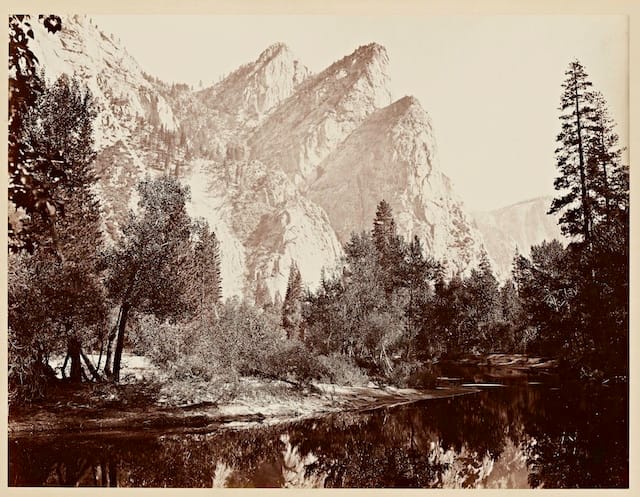
Back in the 1860s, the capital of the United States was glimpsing two visions of its country: one of brutality, and one of beauty. The latter was captured by Carleton Watkins in his photographs of an untouched wilderness in the West.

As Cantor Arts Center Curator Elizabeth Kathleen Mitchell writes in her essay in the newly published Carleton Watkins: The Stanford Albums: “Two types of landscape photographs circulating in Washington, D.C., after 1861 influenced national policy: the horrific pictures of Civil War battlefields, and Watkins’s views of Yosemite, the vast Pacific paradise. Like his English and French counterparts photographing the Holy Land, Watkins captured the imagination in a way that profoundly affected how people understood the place.” And that influence pushed President Lincoln to pass the Yosemite Valley Grant Act, which preserved it for public use, an initial step toward what became the National Park System.
Carleton Watkins: The Stanford Albums, released by Stanford University Press, publishes for the first time the university’s three Watkins albums, encompassing 156 images — Photographs of the Pacific Coast (1862-76), Photographs of the Yosemite Valley (1861 and 1865-66), and Photographs of the Columbia River and Oregon (1867 and 1870). Included are 17 essays by scholars associated with Stanford on his work. A coinciding exhibition opened last month at Stanford’s Cantor Arts Center with selections from the albums.
The book is a behemoth (although, at $40, surprisingly affordable for an art book of its size), a necessity to really do justice to Watkins’ work. He’d never intended to be a photographer when he left New York for California in 1849 (he, like so many, wanted gold). But by a twist of fate while working as a clerk in a place where the studio photographer suddenly quit, he found himself in the job. By the 1860s Mollie Latham, the wife of California Governor Latham, had commissioned him to document Yosemite Valley along with other areas of the coast. From 1861 to 1879, he lugged his 75-pound, large-format, mammoth-plate camera from the beach to the mountains and all terrain in between.

This was only a couple of decades after photography itself had been invented, so hauling the early equipment, tripods, darkroom materials, lenses, and hefty glass plates was no easy matter. As art and art history doctoral candidate George Philip LeBourdais notes in his essay, when “Watkins returned to Yosemite with new equipment in 1865, colleagues calculated the photographer’s burden as roughly 2,000 pounds of equipment, spread in 150-pound loads across the backs of twelve mules.”
The book reveals the majesty of 19th century American nature, with the lumbering mountains, spindly trees, crystal clear lakes, and sprawling uninterrupted landscapes, all with a patient eye that is remarkable for the conditions Carleton was working under. In some photographs, “progress” does appear, but Carleton never gives the sprouts of cities and beginnings of infrastructure the same monumental gravity.
Things didn’t go well for Carleton after the albums. Hit by the 1874 Bank of California failure, he lost his business. Bankrupt, he at one point resorted to living with his family in an old railcar. Then he lost almost all of his work in the 1906 San Francisco earthquake. In the end he was nearly blind, and lived out his final miserable years in the Napa State Hospital for the Insane.
Luckily for his legacy, Timothy Hopkins, one of Stanford’s original trustees, gifted the albums to the university. And while for over 75 years they’ve mostly gone overlooked in storage (a 1999 exhibition at the San Francisco Museum of Modern Art kindled some attention in Watkins’s photography), they are now finally accessible, 150 years after they influenced the future of Yosemite Valley.
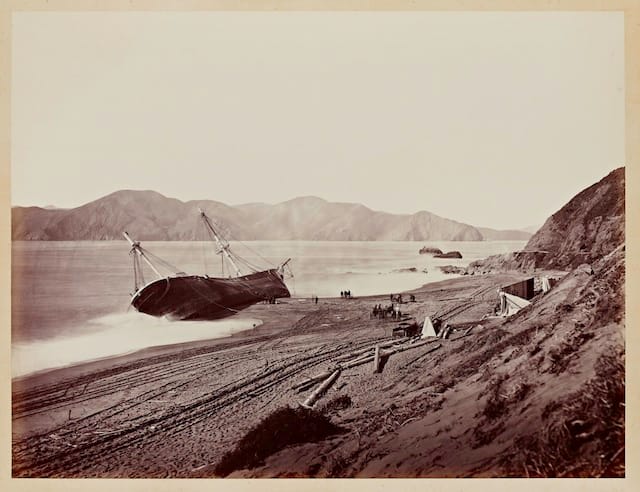
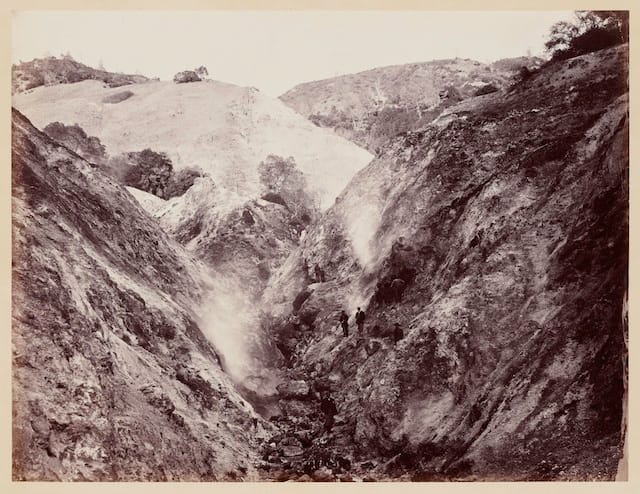
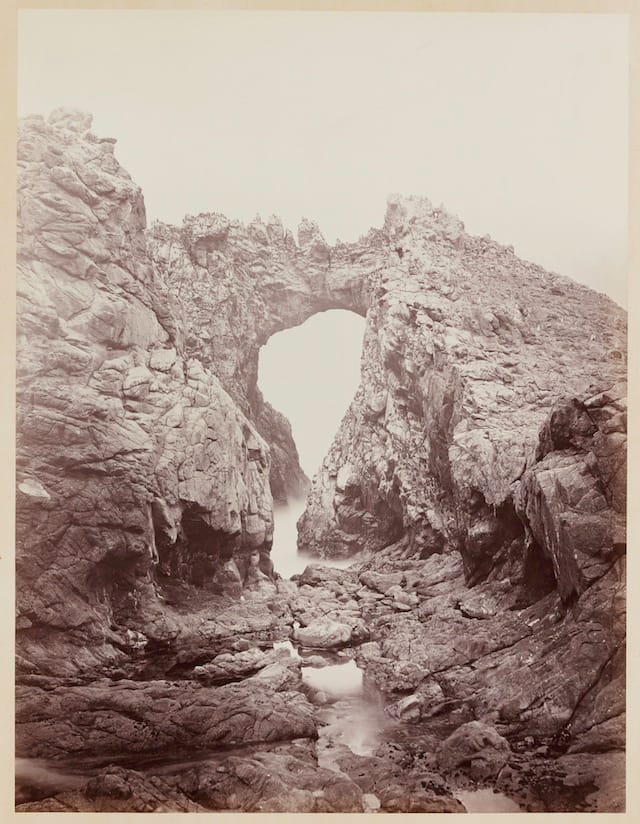


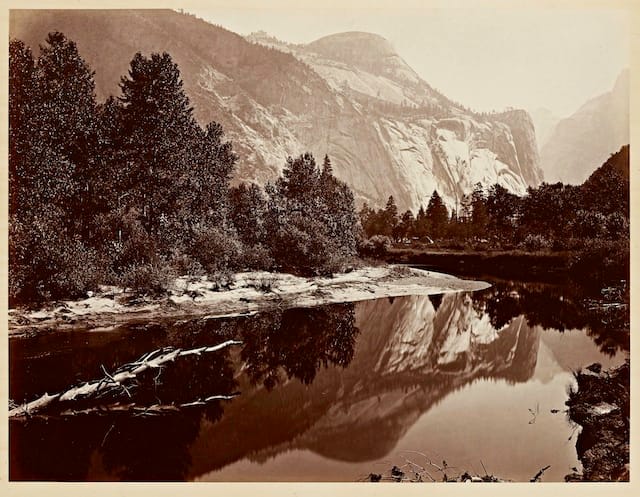
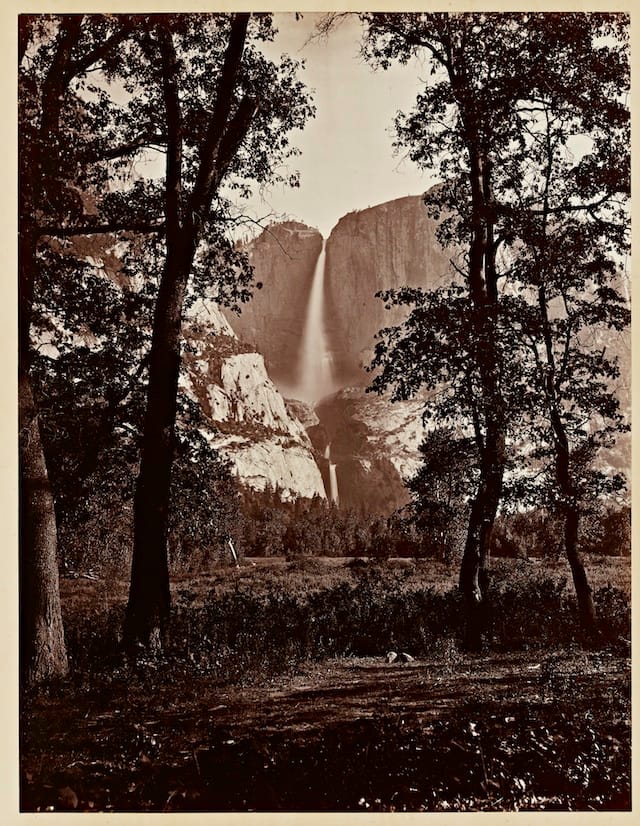
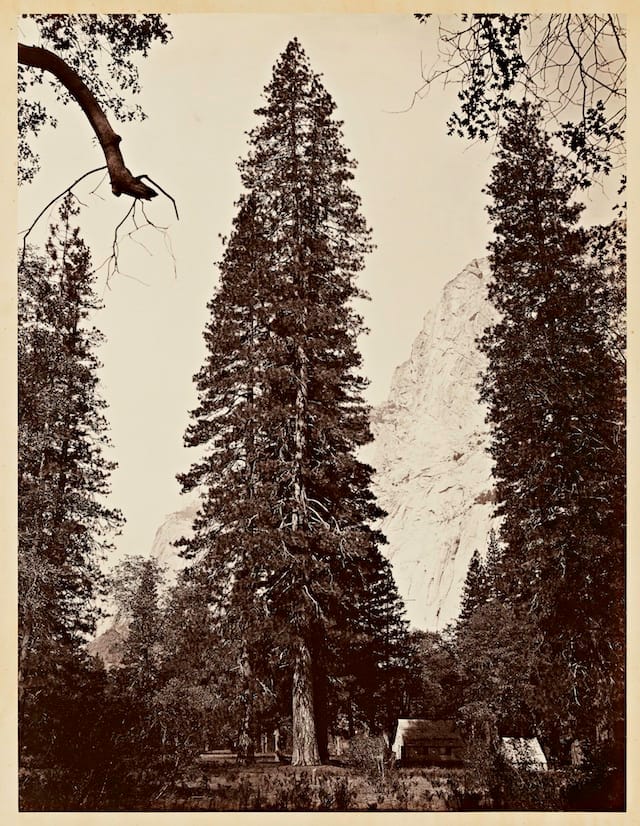

Carleton Watkins: The Stanford Albums is available from Stanford University Press. The coinciding exhibition is on view at the Cantor Arts Center at Stanford University (328 Lomita Drive, Stanford, California) through August 17.





